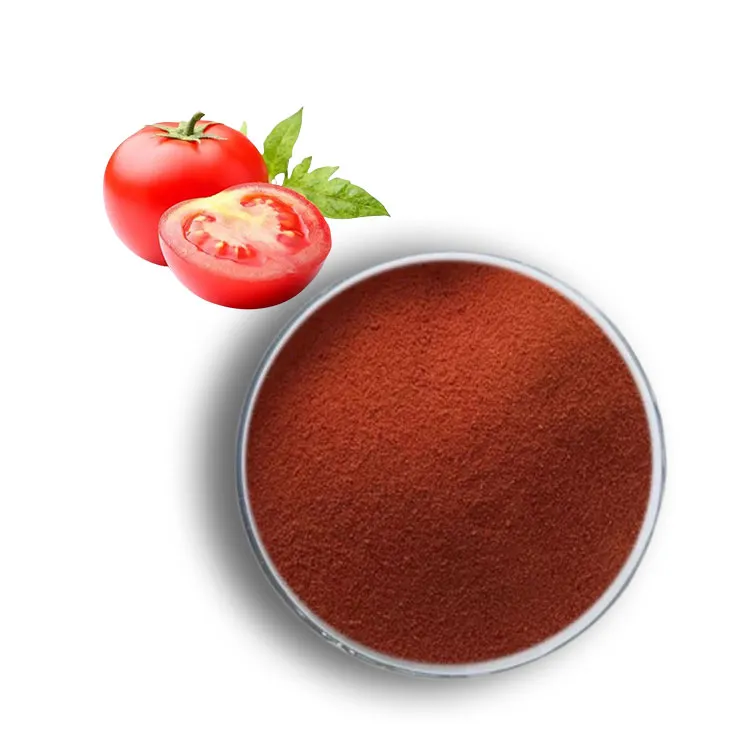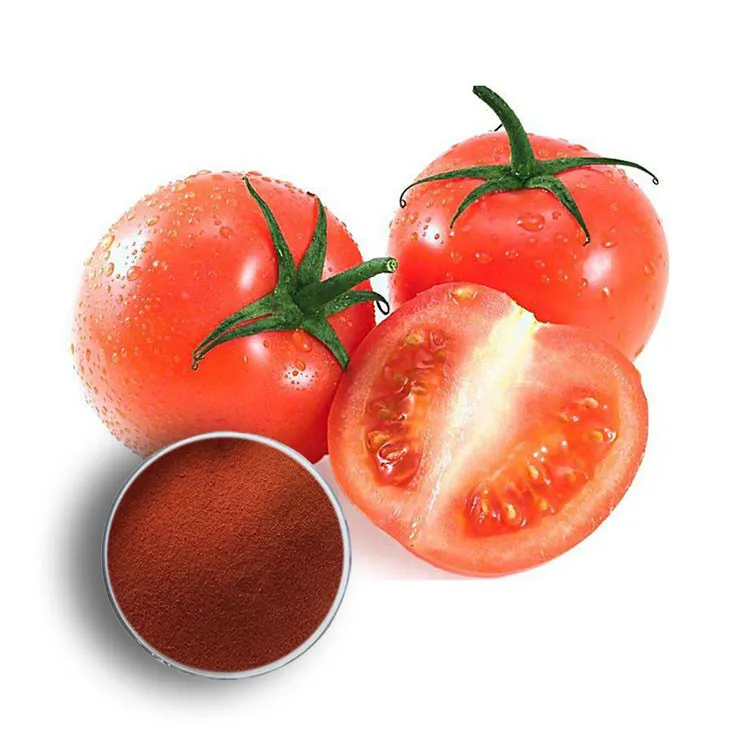- 0086-571-85302990
- sales@greenskybio.com
Optimal Bioavailability of Lycopene
2024-11-30

1. Introduction
Lycopene is a powerful antioxidant that has been associated with numerous health benefits, including reducing the risk of certain cancers, cardiovascular diseases, and macular degeneration. However, in order to fully realize these health - promoting effects, it is crucial to understand and optimize its bioavailability. Bioavailability refers to the proportion of a substance that is absorbed from the diet and becomes available for physiological functions in the body. In the case of Lycopene, several factors can influence how much of this antioxidant is actually absorbed and utilized by the body. This article will explore these factors in detail, including the differences between natural and synthetic Lycopene, the role of the food matrix, and the importance of dietary fats in enhancing lycopene absorption.

2. Natural vs. Synthetic Lycopene
2.1 Natural Lycopene
Natural lycopene is typically obtained from plant sources, with tomatoes being the most well - known source. It is found in the form of all - trans - lycopene, which is the most stable and predominant form in nature. Natural lycopene is often part of a complex matrix within the plant, which can affect its bioavailability. For example, in whole tomatoes, lycopene is encapsulated within the cell walls, which can limit its release and subsequent absorption. However, the presence of other phytochemicals in natural sources may also have a synergistic effect on its health benefits.
2.2 Synthetic Lycopene
Synthetic lycopene, on the other hand, is produced chemically. It is often in a more purified form compared to natural lycopene. While it can be more easily incorporated into supplements and processed foods, its bioavailability may differ from that of natural lycopene. Some studies have suggested that the body may process natural and synthetic lycopene differently, although more research is needed to fully understand these differences. In general, synthetic lycopene may lack some of the co - factors and associated phytochemicals that are present in natural sources, which could potentially impact its overall effectiveness in promoting health.
3. The Role of the Food Matrix
3.1 Lycopene in Whole Tomatoes
As mentioned earlier, in whole tomatoes, lycopene is part of a complex structure. The cell walls of tomatoes act as a physical barrier to lycopene release. Cooking tomatoes can help break down these cell walls, increasing the bioavailability of lycopene. For example, tomato sauce or paste, which are made by cooking and processing tomatoes, have a higher lycopene bioavailability compared to raw tomatoes. This is because the cooking process disrupts the cell structure, making lycopene more accessible for absorption.
3.2 Lycopene in Processed Products
Processed tomato products, such as ketchup and canned tomatoes, are also good sources of lycopene. These products often have added ingredients, such as salt, sugar, and preservatives. While these additives may not directly affect lycopene bioavailability, the processing methods used can have an impact. For example, the heat treatment during canning can further break down the tomato matrix, enhancing lycopene release. However, some processing techniques may also lead to the loss of other beneficial components present in the tomatoes. It is important to balance the processing to optimize lycopene bioavailability while maintaining the overall nutritional quality of the product.
4. Dietary Fats and Lycopene Absorption
4.1 The Mechanism of Fat - Facilitated Absorption
Dietary fats play a crucial role in enhancing lycopene absorption. Lycopene is a lipophilic compound, which means it has an affinity for fats. When consumed with dietary fats, lycopene can be incorporated into micelles, which are small lipid - based structures that can be more easily absorbed by the intestinal cells. The presence of fats in the diet helps to solubilize lycopene, allowing it to be transported across the intestinal membrane more efficiently.
4.2 Sources of Dietary Fats
Different sources of dietary fats can have varying effects on lycopene absorption. Healthy fats such as those from olive oil, nuts, and avocados are good choices. For example, adding a small amount of olive oil to a tomato - based dish can significantly increase the absorption of lycopene. However, it is important to note that excessive consumption of fats, especially saturated and trans fats, can have negative health consequences. Therefore, a balanced approach to including fats in the diet is necessary to optimize lycopene bioavailability while maintaining overall health.5. Other Factors Affecting Lycopene Bioavailability
5.1 Individual Variability
Individual factors can also influence lycopene bioavailability. These include factors such as age, gender, and overall health status. For example, older individuals may have a reduced ability to absorb lycopene compared to younger individuals. Additionally, certain medical conditions or medications may affect the absorption or metabolism of lycopene. Understanding these individual differences can help in tailoring dietary recommendations to optimize lycopene intake and bioavailability for different populations.
5.2 Co - Consumption with Other Nutrients
The co - consumption of lycopene with other nutrients can also impact its bioavailability. For instance, vitamins C and E, which are also antioxidants, may interact with lycopene. Some studies suggest that these vitamins can help protect lycopene from oxidation during absorption, thereby enhancing its bioavailability. Additionally, certain minerals and fiber may also play a role in lycopene absorption, either directly or indirectly.6. Strategies to Optimize Lycopene Bioavailability
6.1 Dietary Modifications
To optimize lycopene bioavailability, several dietary modifications can be made. Incorporating more cooked tomato products into the diet, such as tomato sauce, soup, or stew, can increase lycopene intake and absorption. Additionally, consuming tomatoes or tomato products with a source of healthy fats, like olive oil or avocado, is recommended. This can be as simple as adding a drizzle of olive oil to a tomato salad or using avocado in a tomato - based sandwich.
6.2 Supplementation Considerations
For those who may have difficulty obtaining sufficient lycopene from diet alone, supplementation may be an option. However, it is important to consider the form of lycopene in the supplement. As discussed earlier, natural and synthetic lycopene may have different bioavailabilities. Additionally, supplements should be taken in the context of a balanced diet, and it is advisable to consult a healthcare provider before starting any supplementation regimen.7. Conclusion
Optimizing the bioavailability of lycopene is essential for reaping its full health - promoting potential. Understanding the differences between natural and synthetic lycopene, the role of the food matrix, and the importance of dietary fats in absorption can help individuals make informed dietary choices. By incorporating cooked tomato products, consuming with healthy fats, and considering individual factors and co - nutrient interactions, it is possible to enhance lycopene bioavailability. Whether through diet or supplementation, maximizing lycopene absorption can contribute to better health outcomes, including reduced risk of chronic diseases. Future research should continue to explore the complex factors influencing lycopene bioavailability to further refine dietary recommendations and improve public health.
FAQ:
What are the different forms of lycopene?
Lycopene exists in two main forms: natural and synthetic. Natural lycopene is typically found in foods such as tomatoes, while synthetic lycopene is produced through chemical processes in a laboratory setting.
How does the form of lycopene (natural vs. synthetic) affect its bioavailability?
Natural lycopene is often complexed with other substances in the food matrix, which can influence its release and absorption. Synthetic lycopene, on the other hand, may be in a more purified form. However, some studies suggest that natural lycopene may be more bioavailable as it is accompanied by other beneficial compounds in the food source. But more research is needed to fully understand the differences in bioavailability between the two forms.
What role does the matrix play in lycopene bioavailability?
The matrix in which lycopene is present can significantly impact its bioavailability. For example, in whole tomatoes, lycopene is part of a complex structure that includes cell walls and other components. Processing tomatoes into products like tomato paste or juice can break down some of these structures, potentially increasing the bioavailability of lycopene. However, different processing methods can have different effects, and in some cases, over - processing may lead to a loss of other beneficial components that could interact with lycopene to enhance its absorption.
How do dietary fats enhance lycopene absorption?
Dietary fats play a crucial role in enhancing lycopene absorption. Lycopene is a fat - soluble compound. When consumed with dietary fats, the fats help to emulsify lycopene in the digestive tract, making it more accessible for absorption. Fats can also increase the solubility of lycopene in the intestinal lumen, facilitating its transport across the intestinal wall into the bloodstream.
Are there any other factors that can affect lycopene bioavailability?
Yes, factors such as the individual's digestive health, the presence of other nutrients or substances in the diet, and the method of food preparation can also affect lycopene bioavailability. For instance, cooking methods can change the chemical structure of lycopene and its matrix, either enhancing or reducing its bioavailability. Also, certain medications or health conditions that affect digestion may impact how well lycopene is absorbed.
Related literature
- Bioavailability of Lycopene: Current Knowledge and Future Perspectives"
- "The Influence of Food Matrix on Lycopene Bioavailability: A Review"
- "Lycopene: Chemistry, Bioavailability, and Its Nutritional and Health Benefits"
- ▶ Hesperidin
- ▶ citrus bioflavonoids
- ▶ plant extract
- ▶ lycopene
- ▶ Diosmin
- ▶ Grape seed extract
- ▶ Sea buckthorn Juice Powder
- ▶ Beetroot powder
- ▶ Hops Extract
- ▶ Artichoke Extract
- ▶ Reishi mushroom extract
- ▶ Astaxanthin
- ▶ Green Tea Extract
- ▶ Curcumin Extract
- ▶ Horse Chestnut Extract
- ▶ Other Problems
- ▶ Boswellia Serrata Extract
- ▶ Resveratrol Extract
- ▶ Marigold Extract
- ▶ Grape Leaf Extract
- ▶ blog3
- ▶ blog4
-
Chinese Soybean Extract Factories.
2024-11-30
-
Red Yeast Rice Extract Supplier.
2024-11-30
-
How to Extract Bilberry Extract from Plants?
2024-11-30
-
Chinese Marigold Extract Suppliers.
2024-11-30
-
Organic Bilberry Extract, Australia.
2024-11-30
-
Organic Echinacea Extract, Australia.
2024-11-30
-
Shikone Extract
2024-11-30
-
Bayberry Extract
2024-11-30
-
Coix Seed Extract
2024-11-30
-
Plantain extract
2024-11-30
-
Propolis Extract Powder
2024-11-30
-
Oyster Mushroom Extract Powder
2024-11-30
-
Avocado Extract Powder
2024-11-30
-
Citrus Aurantium Extract
2024-11-30
-
Citrus Aurantii Extract
2024-11-30
-
Sophora Japonica Flower Extract
2024-11-30





















